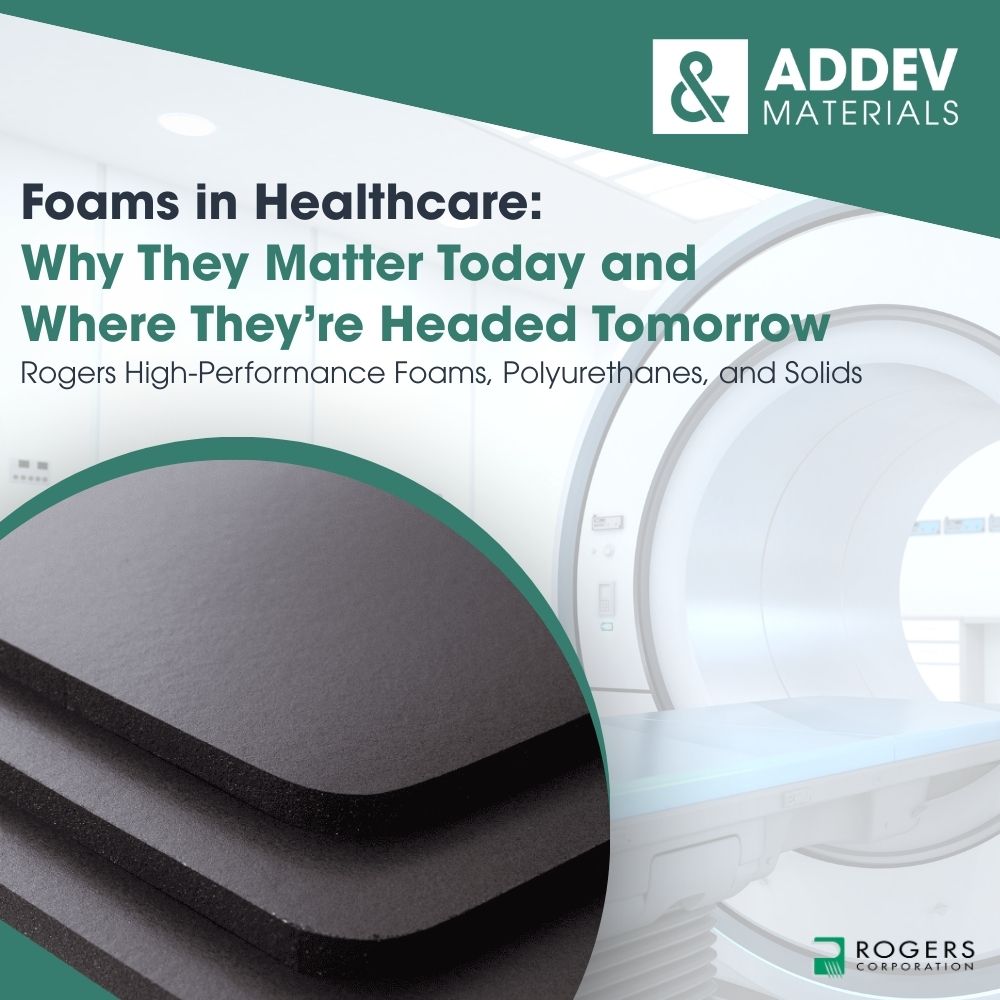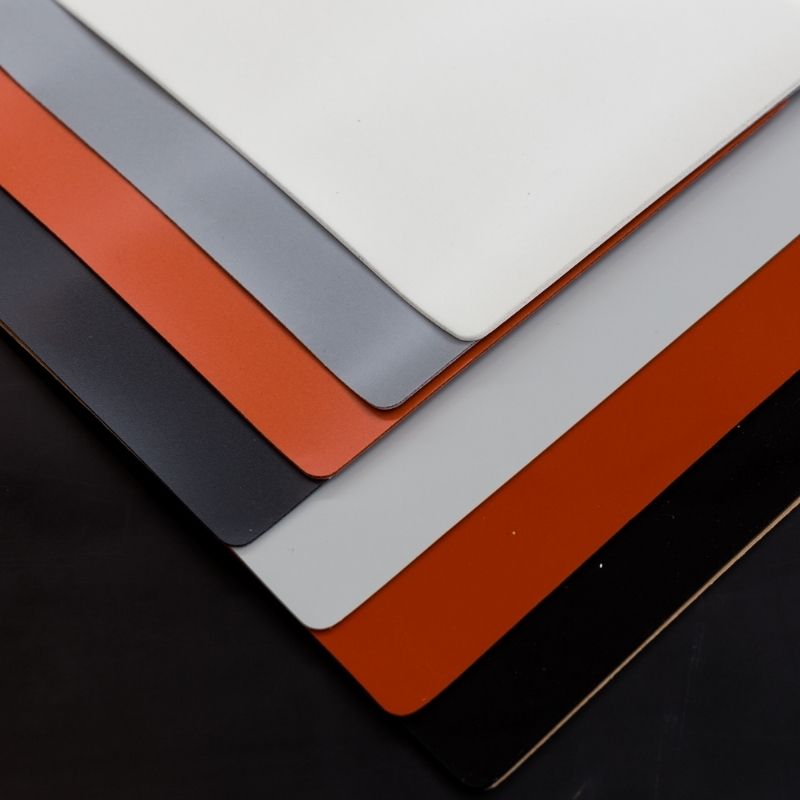Foams in Healthcare: Why They Matter Today and Where They’re Headed Tomorrow
In medical devices, every component serves a purpose, and foams are no exception. While often hidden from view, they play an essential role in sealing, protecting, cushioning, and enhancing comfort. Without them, devices would be noisier, less reliable, and more vulnerable to failure in real-world conditions.
At ADDEV Healthcare, we partner with Rogers Corporation to supply and convert industry-leading medical-grade foams. These materials are engineered to meet the demanding requirements of healthcare environments, ensuring that devices perform the way patients and providers depend on them to.
Why Foams Are Essential
In healthcare, materials must perform consistently over the life of a device, often while enduring sterilization, temperature cycling, chemical exposure, or constant patient contact. Foams bring unique advantages that make this possible. They create seals that protect sensitive electronics from dust, fluids, and contaminants; provide cushioning that improves patient safety and comfort; dampen vibration and noise to make devices easier to use; and maintain durability in harsh environments ranging from hospital cleaning protocols to cold-chain shipping conditions. Many Rogers foams also comply with critical healthcare standards such as USP Class VI, ISO 10993, and 21CFR177.2600, reinforcing their suitability for medical use.
Ultimately, foams safeguard the device, the operator, and the patient.

Where Foams Are Found
Though often unnoticed, foams are integrated into a wide range of healthcare and life science applications. In diagnostic and imaging equipment, they serve as gaskets and seals to prevent fluid ingress, protect displays, and reduce light leakage. Respiratory devices rely on them for acoustic and vibration damping, improving both function and patient compliance. Wearable and orthotic devices use foams for cushioning and skin compatibility, while lab equipment such as PCR thermal cyclers and filtration systems incorporate them as precision seals. They also play a role in cold-chain transport, helping maintain temperature control for sensitive shipments, and in advanced surgical and robotic systems, where they ensure precision through vibration control and sealing.
The type of foam depends on the application. BISCO® silicone foams deliver extreme temperature stability, durability, and sealing strength, while PORON® polyurethanes provide superior cushioning, impact absorption, and design flexibility.
Why Material Choice Matters
Selecting the wrong foam can lead to premature device failure, increased maintenance or warranty claims, diminished patient safety, or even regulatory compliance risks. The right foam, however, enhances reliability, supports product longevity, and strengthens trust in the device and the brand behind it.
Looking Ahead: The Future of Foams
As medical technology advances, foams are evolving right alongside it. Future innovations include comfort layers that not only cushion but also protect embedded electronics and sensors in smart wearables; thinner and lighter foams designed for compact, portable devices; and materials capable of performing reliably in robotic and automated care systems. Sustainability is also becoming a key driver, with new foams being developed to lower environmental impact without compromising healthcare performance. At the same time, advances in biocompatibility are pushing materials to meet even stricter global standards for skin contact and patient safety.
Foams may not be the most visible part of a medical device, but they remain one of the most important. From protecting sensitive electronics to ensuring patient comfort, their role in healthcare today is indispensable — and their potential for tomorrow is even greater.

Why Choose ADDEV Healthcare for Foam & Solid Converting?
In medical device design, precision and reliability are non-negotiable. That’s why ADDEV Healthcare partners with Rogers Corporation to convert and die cut advanced materials like BISCO® silicone foams, PORON® polyurethanes, and BISCO® silicone solids—each engineered to solve complex design challenges. From cushioning layers in wearables to high-integrity seals in diagnostic systems, our converting expertise ensures every component performs under pressure.
- Expert die-cutting, kiss-cutting, slitting, and multi-layer lamination
- Material selection support for biocompatibility, durability, and sealing integrity
- Cleanroom converting with ISO 13485:2016 certified processes
- Access to Rogers’ medical-grade materials including USP Class VI and ISO 10993 compliant foams and solids

